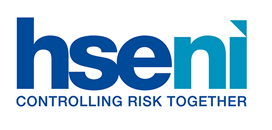Effective health and safety performance comes from the top - members of the board have both collective and individual responsibility for health and safety.
Why directors and board members need to act
Directors and boards need to examine their own behaviours, both individually and collectively, against the guidance given.
Where they see that they fall short of the standards it sets them the need to change what they do to become more effective leaders in health and safety.
- protecting the health and safety of employees or members of the public who may be affected by your activities is an essential part of risk management and must be led by the board.
- failure to include health and safety as a key business risk in board decisions can have catastrophic results. Many high-profile safety cases over the years have been rooted in failures of leadership.
- health and safety law places duties on organisations and employers, and directors can be personally liable when these duties are breached - members of the board have both collective and individual responsibility for health and safety
Essential principles
Strong leadership from the top
- visible, active commitment from the board
- establishing effective ‘downward’ communication systems and management structures
- integration of good health and safety management with business decisions
Worker involvement
- engaging the workforce in the promotion and achievement of safe and healthy conditions
- effective 'upward' communication
- providing high quality training
Assessment and review
- identifying and managing health and safety risks
- accessing (and following) competent advice
- monitoring, reporting and reviewing performance
Benefits
Addressing health and safety should not be seen as a regulatory burden: it offers significant opportunities. Benefits can include:
- reduced costs
- reduced risks
- lower employee absence and turnover rates
- fewer accidents
- lessened threat of legal action
- improved standing among suppliers and partners
- better reputation for corporate responsibility among investors, customers and communities
- increased productivity, because employees are healthier, happier and better motivated
Auditing
Larger public and private sector organisations need to have formal procedures for auditing and reporting health and safety performance.
The board should ensure that any audit is perceived as a positive management and boardroom tool. It should have unrestricted access to both external and internal auditors, keeping their cost-effectiveness, independence and objectivity under review.
Various codes and guides (many of them sector-specific) are available to help organisations report health and safety performance and risk management as part of good governance.
Health and safety leadership checklist
Plan
- How do you demonstrate the board's commitment to health and safety? See Health and Safety policy
Do
- What have you done to ensure your organisation, at all levels including the board, receives competent health and safety advice? See Appointing a competent person
- How are you ensuring all staff, including the board, are sufficiently trained and competent in their health and safety responsibilities? See Training
- How confident are you that your workforce, particularly safety representatives, are consulted properly on health and safety matters, and that their concerns are reaching the appropriate level? See Trade union representatives and health and safety legislation
- What systems are in place to ensure your organisation's risks are assessed, and that sensible control measures are established and maintained? See Risk assessments
Check
- How well do you know what is happening on the ground, and what audits or assessments are undertaken to inform you about what your organisation and contractors actually do?
- What information does the board receive regularly about health and safety, for example, performance data and reports on injuries and work-related ill health?
- Do you compare your performance with others in your sector or beyond?
- Where changes in working arrangements have significant implications for health and safety, how are these brought to the attention of the board?
Act
- What do you do to ensure appropriate board-level review of health and safety?
Key legislation
Please note that these links are to the original legislation on the OPSI website, visitors should verify for themselves whether legislation is in force or whether it has been amended or repealed by subsequent legislation.
